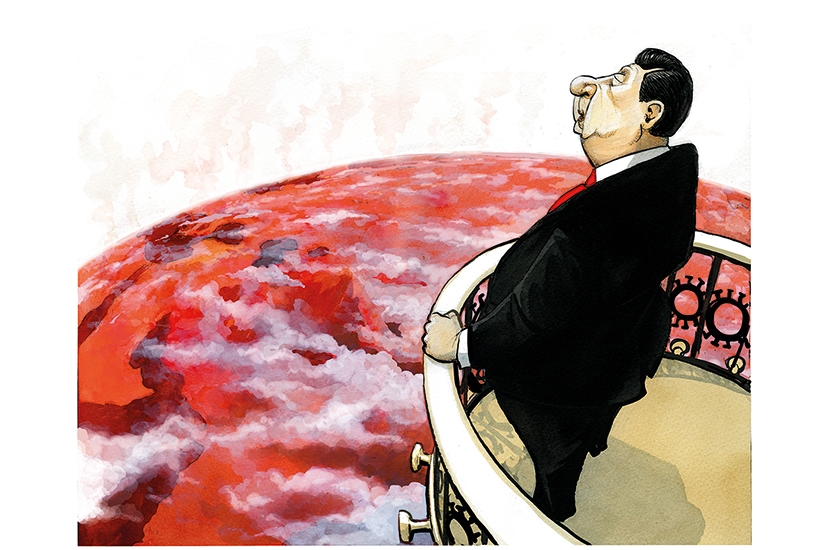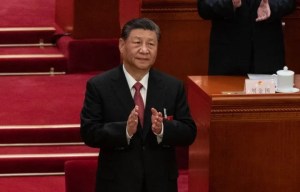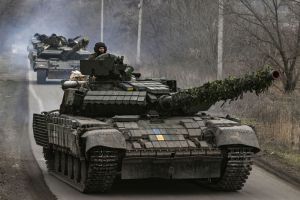Back in February, the Chinese state appeared to be in trouble. A terrifying virus had infected thousands of people and the country’s social media exploded in anger against the authorities faster than Chinese censors could scrub away the critical comments. Like governments elsewhere, the Chinese Communist party (CCP) turned to the emergency analogy of choice, World War Two. Channeling Mao Zedong’s guerrilla campaign against the Japanese in the 1930s, state media declared that China was fighting a ‘people’s war’ against the virus.
As in that earlier war, China’s conflict with the virus has shifted from a defiant retreat to a declaration of victory. Nor is this just bluster. The latest economic figures suggest its economy is the only one in the world that will make a full recovery from the virus — growing by 2 percent while America’s falls by 5 percent, the eurozone by 8 percent and Britain by 10 percent. Justin Yifu Lin, former chief economist of the World Bank, thinks China is on track to become the world’s biggest economy by 2030. Beijing can now look forward, while other major economies are still working out how to manage the damage while racking up staggering amounts of debt.
None of this could have happened had China not dealt so swiftly (often brutally) with COVID-19. This week, Chinese media has been full of images of people lining for the new anti-viral vaccine — it feels there that the crisis is genuinely over.
Yet when I call friends in Shanghai, they point out that after the institution of an efficient (and highly intrusive) track-and-trace system and harsh lockdowns, life is pretty much back to normal. China’s middle classes look at news from the locked-down West with bemusement before going out to restaurants, concerts and holidays. Its recent Golden Week vacation saw more than half a billion people take to China’s high-speed railways and new highways.
Back in the spring, observers queried whether China’s high figures for suppression of the virus could possibly be real. Xi Jinping, China’s president and secretary-general of the CCP, can survey the state of his country and reflect that it is far better off than anyone might have expected when the pandemic started. The regime will have been further encouraged by opinion polling that suggests positive ratings for the government’s performance among Chinese citizens, with one survey suggesting 80 percent satisfaction rates. The CCP has used this to justify doubling down on surveillance of its citizens, and the pandemic will almost certainly be taken as a pretext to clamp down on dissidence.
Encouraged by its apparent success in controlling the virus, the CCP have begun to develop new ways of thinking about their economic policies, in particular when it comes to challenging the West more explicitly. The party uses the term ‘dual circulation’, which is a bland-sounding code for China’s unique approach to globalization. It’s as powerful in its way as ‘America First’ or Brexit. It signifies that China is aiming to create two linked but distinct systems. One is a nationalist domestic economy that relies on another Mao-era term, zili gengsheng, or ‘self–reliance,’ linked to the ‘Made in China 2025’ agenda, which would see much of China’s critical industry brought home. The other is international engagement which expands China’s reach, particularly when it comes to technology.
China is investing heavily on research and development. The virus has, in fact, given Chinese science a boost in several areas, from biotech to artificial intelligence (including the use of drones to deliver online shopping). This comes at a time when funding for research in the West may be vulnerable due to constrained budgets.
Not so long ago, it seemed as if Xi’s grand Belt and Road Initiative — designed to bring billions of dollars of infrastructure investment to a swath of territory from western Europe to south-east Asia by way of east Africa — might not live up to his grand ambitions. Had he overreached? But the pandemic has changed the balance of global trade in ways that might now make China seem like an attractive partner for developing nations.
China’s opportunity is clear. Previously, the western world could dangle the prospect of generous investment to countries such as Pakistan or Myanmar through institutions such as the World Bank, tied as they are to norms of good governance and democracy. In a post-COVID world, in which there will be less trade, less travel, less globalism, how can the West continue to influence such countries?
There’s less to Beijing’s financial might than meets the eye, however. Some 90 percent of Chinese funding for Xi’s Belt and Road Initiative is not foreign direct investment, but loans from two major Chinese banks and various other institutions. In the United Nations, where Chinese influence is growing in institutions as diverse as the World Health Organization and the Human Rights Council, the United States is still the biggest payer of dues.
Perceptions matter. Right now, Xi has a powerful story he wants to tell: about domestic authoritarian stability, effective public health strategy and economic growth. It’s a narrative he’s keen to stand up against the seeming disorder of the democratic world.
The past few months have also seen China adopt a much more confrontational tone toward its neighbors, including a clash with India in the Himalayas, and displays of military might in the skies near Taiwan. In practice, saber-rattling is often a sign that China wants to create alarm without a real intention to act. As the imposition of the Hong Kong security law showed, when it really wants to strike fast, Beijing gives little advance warning. But if scaring Asia is the aim, China has succeeded.
Xi’s China has ended up in a strange position; expecting a lower growth rate than was predicted at the end of 2019, yet relatively stronger than many of its global rivals in terms of capacity to act. Still, there is no clear path from here to the next ‘people’s victory’. The impressive economic figures conceal a longer-term problem, as the economist George Magnus has argued, of an unbalanced economy marked by under-consumption, a rising trade surplus, and debt still rapidly rising.
The ‘dual circulation’ idea that China can simply separate off its domestic and international economies is unsustainable in the long term; major structural reforms will still be needed. And there are other issues, such as pollution, climate change, and demographic decline — from 2029, there will be five million fewer Chinese per year, and the population will be rapidly aging.
[special_offer]
China’s higher global status creates new vulnerabilities too. Beijing is having to come to terms with the reality that the oppression of the Uighurs and the constraining of freedoms in Hong Kong are not simply internal matters for a country that wants to achieve global influence through ‘a community of common destiny’, because the result is that Chinese businesses and investment become negatively associated with the authoritarian values of their homeland.
The single greatest obstacle to the CCP’s power, however, lies not in Beijing but in Washington. A second Trump term, more virus-driven economic panic, and more chaos in the liberal global order, could end up further boosting Beijing’s message of economic success and authoritarian government. A Biden administration may find it easier to bring China-skeptic forces together.
The fear of a new US administration may be behind the latest war metaphors coming out of Beijing. On VJ day in August, China stressed internationalism when it commemorated its founding role in the UN in 1945. This autumn, however, the 70th anniversary of the outbreak of the Korean War in 1950 has dominated China’s official media channels. In Chinese, that conflict is known as Kangmei — the ‘Resist America’ war. In Beijing’s mind, the US is down, not out. America remains the only real challenge to China’s global future.
This article was originally published in The Spectator’s UK magazine. Subscribe to the US edition here.


















